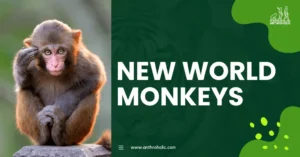AI Answer Evaluation Platform Live Now. Try Free Answer Evaluation Now
Post-Darwinian Theories of Evolution
Charles Darwin’s theory of evolution by natural selection revolutionized our understanding of how species develop and adapt over time. However, since Darwin’s time, scientists have proposed several additional theories and modifications to Darwin’s original ideas. These post-Darwinian theories of evolution build upon and refine Darwin’s work, offering new perspectives and insights into the mechanisms driving evolutionary change.

Neo-Darwinism
Neo-Darwinism, also known as the Modern Synthesis, combines Darwin’s theory of natural selection with Mendelian genetics. It emphasizes the role of genetic variation and mutation as the basis for evolutionary change. According to neo-Darwinism, variations in genes arise through mutations, and the survival and reproduction of individuals with advantageous traits lead to the spread of those traits in subsequent generations. This theory places a strong emphasis on the gradual accumulation of small genetic changes over long periods of time.
Example: The development of antibiotic resistance in bacteria is a classic example of neo-Darwinian evolution. Bacteria that possess a mutation conferring resistance to an antibiotic have a survival advantage and are more likely to reproduce, leading to the proliferation of resistant strains.
Punctuated Equilibrium
Punctuated equilibrium challenges the traditional view of evolution as a slow and steady process. This theory, proposed by Stephen Jay Gould and Niles Eldredge in the 1970s, suggests that species undergo relatively long periods of stability (equilibrium) punctuated by brief periods of rapid change. During these rapid changes, new species can emerge rather quickly, followed by extended periods of relative stability.
Example: The fossil record of the horse (Equidae) is often cited as evidence for punctuated equilibrium. The fossil record shows long periods of stasis with minimal change, interrupted by relatively rapid periods of diversification and speciation.
Epigenetics
Epigenetics refers to changes in gene expression that can be inherited without changes to the underlying DNA sequence. These changes are influenced by factors such as environmental conditions and lifestyle choices. Epigenetic modifications can affect how genes are turned on or off, leading to alterations in an organism’s phenotype. Epigenetics suggests that the environment can play a role in shaping an individual’s traits and that these acquired traits can be passed down to future generations.
Example: The Dutch Hunger Winter study, which investigated the effects of severe famine during World War II on pregnant women, found that the children of women who experienced famine during early pregnancy had a higher risk of developing obesity and diabetes later in life. This study suggests that the effects of the famine were passed on through epigenetic changes.
Genetic Drift
Genetic drift refers to random fluctuations in allele frequencies within a population over time. Unlike natural selection, genetic drift does not involve the differential survival and reproduction of individuals based on their traits. Instead, genetic drift is influenced by chance events and tends to have a more significant impact on smaller populations. Over generations, certain alleles may become more or less common simply due to random sampling effects.
Example: The founder effect is a type of genetic drift that occurs when a small group of individuals establishes a new population. As a result, the new population may have reduced genetic diversity compared to the original population. This effect can be observed in island populations that are founded by a small number of colonizers.
Extended Evolutionary Synthesis
The Extended Evolutionary Synthesis (EES) represents a recent development in evolutionary biology, aiming to broaden the traditional view of evolutionary processes. EES proposes that evolutionary change can occur not only through genetic variation and natural selection but also through additional mechanisms such as developmental plasticity, cultural inheritance, and niche construction. It suggests that the interactions between organisms and their environment play a crucial role in shaping evolutionary outcomes.
Example: The evolution of complex behaviors, such as tool use in primates, can be attributed to a combination of genetic factors and cultural transmission. The ability to learn from and imitate others within a social group allows for the spread of new behaviors that can influence the survival and reproductive success of individuals.
Conclusion
Post-Darwinian theories of evolution have expanded our understanding of the mechanisms driving evolutionary change. Neo-Darwinism integrates genetics with natural selection, emphasizing the role of genetic variation and mutation. Punctuated equilibrium challenges the notion of gradualism, proposing periods of rapid change interspersed with stability. Epigenetics highlights the influence of environmental factors on gene expression and inheritance. Genetic drift emphasizes the role of chance events in shaping allele frequencies within populations. The Extended Evolutionary Synthesis broadens the view of evolutionary processes by incorporating additional mechanisms beyond genetic variation and natural selection.
These theories, along with others not mentioned in this article, continue to shape and refine our understanding of evolution. By exploring these post-Darwinian theories, we gain a deeper appreciation for the complexity and diversity of life on Earth and the various factors that contribute to its evolutionary trajectory.



